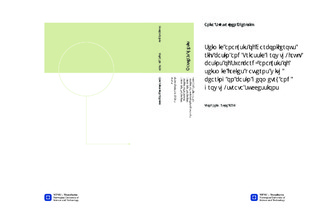| dc.description.abstract | This study analyzes 2D seismic sections of extensional growth-fault basins, covering two tectonic realms; (i) Carboniferous rifting in Central Spitsbergen, and (ii) shallow Triassic extensional basins of the SE Svalbard region. The study of the Carboniferous Billefjorden Trough in Sassenfjorden-Tempelfjorden and from Reindalen, focus on the rift infill with associated wedge and lenticular shaped depocenter geometries. The two fundamental geometries are identified by either variable fault truncation of the wedge-shaped basin fill (fault onlap relationship) or fault-tip monoclines with associated basinward offset of the related lenticular basins. The interpretation of lines from Eastern Svalbard focus on a series of Triassic, shallow basins (< 200 m; up to 150 ms deep) of which most are bound by listric faults that sole out in underlying shale successions. These observations are correlated with similar faulting with basins in cliffs of Edgeøya. The offshore Triassic faulting of Eastern Svalbard represent a first assessment, as such analysis has not been carried out before. This study goes deeper into details on the evaporite-dominated Carboniferous Billefjorden Trough than those presented by Bælum and Braathen (2012). Some new information and characterization of the basin infill link seismic facies analysis of Carboniferous rifting to reflector belts that can be correlated with the pre-rift Billefjorden Group, the syn-rift successions of the Hultberget, Ebbadalen and Minkinfjellet formations, and the immediate post-rift (or late syn-rift) Wordiekammen Formation. The Billefjorden Trough is the result of a complex basin evolution history, and published results of outcrop studies in the northern Billefjorden area shows a basin that changes basin depocenter geometry, from a lenticular shape to a wedge shape and then back to a lenticular shape. Similar patterns are recognized by the seismic facies analysis. In a conceptual framework, the Billefjorden Trough differs from the rift basins described in Prosser (1993), in that the basin is significantly influence of fault-propagation folding, probably controlled by thick basin-center successions of low-shear strength evaporites. Encountered geometries are more similar to those of rift basins of the Gulf of Suez. Eastern Svalbard offers world class examples of extensional fault-growth basins in mountain slopes of Edgeøya and partly Hopen. Similar faulting is encountered in the lines interpreted from the Eastern Svalbard dataset, where the intricacy of faulting and their associated shallow basins of Triassic age offer complex geometries but also challenging interpretation work because of limited seismic resolution. Revealed internal geometries include rollovers and drag-folds, offering some general geometrical similarities with the much larger Carboniferous rifts. However, the depositional systems are very different. For the Triassic, regional clinoform progradation in a northerly direction interacted with the faulting, indicating that the coastal or deltafront migration at times were arrested by the faulting. This arrest is suggested by vertically stacked sequences, before the fault systems are bypassed by renewed clinoform progradation. | nb_NO |

